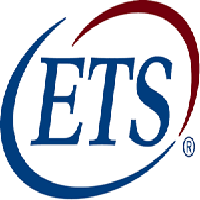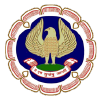
IIT-Madras Humanities and Social Sciences Entrance Examination (HSEE)
Based on the latest pattern | Detailed Analysis
The Indian Institute of Technology (IIT) Madras conducts the IIT-Madras Humanities and Social Sciences Entrance Examination (HSEE) for providing admissions to the deserving candidates to the 5-year integrated M.A. Program. The courses offered through the entrance examination are:
-
Integrated M.A. in Development Studies
-
Integrated M.A. in English Studies
Conducting Body: Indian Institute of Technology Madras is a government engineering institute located in Chennai, Tamil Nadu. (IITs), it is recognised as an Institute of National Importance. Established in 1959 with technical and financial support from the former government of West Germany, it was the third IIT that was founded by the Government of India. IIT Madras has been position as the top engineering institute for four years in a row (2016-2019) by the National Institutional Ranking Framework of the Ministry of Human Resource Development.
Important Dates:
|
Events |
Dates |
Mode |
Link |
|
Registration Date |
Will be updated soon |
Online |
|
|
Application Date |
Will be updated soon |
||
|
Admit Card |
Will be updated soon |
||
|
Exam Date |
Will be updated soon |
||
|
Result Date |
Will be updated soon |
Selection Procedure:
-
IIT Madras prepares a common rank list of all the applicants who score above 50% in HSEE.
-
A separate rank list is prepared for SC/ ST, PwD and OBC-NCL categories.
-
OBC-NCL applicants must score at least 45% marks in HSEE to feature in the rank list.
-
SC/ ST and PwD categories must score at least 25% marks.
-
General and OBC category applicants must score 50% marks in HSEE.
-
The seat allocation is made based on merit and availability of seats.
Exam Pattern:
The IIT-Madras HSEE exam is divided into two parts:
-
Paper-1: This paper is a computer-based objective type test paper of a sectional time duration of 2 and a half hours (150 minutes). Part-1 covers the following topics- English and Comprehension Skill, General Studies covering the areas of India Economics, Analytical and Quantitative Ability and Environment and Ecology.
-
Paper-2: This paper is a descriptive type question paper with a sectional time duration of 30 minutes. The topics of an essay are generally related to social issues.
Eligibility:
-
Age Limit:
|
Category |
Age limit |
|
General & OBC |
Candidate must have born on or after 1st October 1994. |
|
SC/ ST/ PwD |
Candidate must have born on or after 1st October 1989. |
-
Educational Qualification: (10+2) or equivalent with 60% marks (General and OBC) and 55% (SC/ST/PwD).
Syllabus/Subject:
- English:
This section tests the applicant’s capacity to understand and use Standard English, and to understand literary language. Questions are related to the following areas:
-
Reading skills: Applicants will be expected to read the given passage/s that aim to test their understanding skills.
-
Grammar: This section tests the applicant’s knowledge of English grammar such as sentence structure and method, the use of tenses, verb patterns, articles, and active and passive constructions, etc.
-
Vocabulary: This section examines the applicant’s vocabulary skills. The applicant’s ability to interpret meaning, structure, and colocation of words is tested here.
- Analytical and Quantitative Ability:
This section tests the applicant’s logical skills and quantitative expertise. Questions are related to the following areas:
-
Numbers, Highest Common Factor (HCF) and Lowest Common Multiple (LCM), Algebra, Calendar, Basic Statistics – Average, Ratio and Proportion, Simple and Compound Interest, Profit and Loss, linear equations, Percentages, Work and time, Discount, Age sums, elementary trigonometry.
-
Data interpretation, Analytical reasoning, Brainteasers, Logical reasoning, and Patterns.
- General Studies:
a) Indian Economy:
-
This part is designed to test the understanding of some basic economic theories and awareness of key matters about the Indian economy with a focus on the developments after independence. The ideas and issues covered are:
-
Understanding the Economy: Scarcity, opportunity cost, economic systems, resource allocation, and their characteristics, forces of demand and supply, features of market economies, the elasticity of demand and supply.
-
Main Features of Indian Economy: Natural resources; literacy and education, human resources -population size and composition, occupational distribution.
-
Major Economic problems: Poverty, measurement, trends, sectoral distribution and policies, Unemployment and Inequality -concepts, inflation – trends, causes, and remedies.
-
Economic Growth and Development: stages of development, national income concepts, and trends Meaning and measurement of economic growth, trends in savings and investment; national policy on education, human development index, health, and health care policies. Planning in India: objectives, priorities, and problems -Five-Year Plans.
-
Sectoral Development: current issues and policies; agriculture – industry-evolution of industrial policies in India (from 1948), public and private sectors, strategies for industrial development, infrastructure, transport and communication, Green Revolution and technological changes, small and medium industries, service sector, etc.
-
Foreign Trade and International Economy: foreign exchange reserves and trade policy, the balance of payments, IMF, WTO, international aid.
-
Money, Banking and Public Finance: Concepts of money and measures of the money supply.
b) Indian Society and Culture:
-
Structure of Indian Society: Caste, Institutions of Marriage, Family and Kinship, Class and Tribe, Political institutions, Demographic Indicators, and Trends.
-
Social Change in India: Westernization, Modernisation, Sanskritization, and Secularisation, Commissions and Policy Interventions, Affirmative Action Programme of the Government, Social Movements and Regionalism, Panchayati Raj Institutions & Governance.
-
History and the Making of Indian Society: British Raj, Sepoy Mutiny, Mughal era, and Islamisation, Reform Movements in the 19th Century and the Emergence of India.
-
Indian Philosophy and Thinkers: Budhha and his Teachings, the Charvakins, Orthodox Systems, Jainism and Mahavira, Sikhism, Sufism, Gandhi, and Non-violence.
c) World Affairs:
-
The emergence of the US and USSR; the emergence of the UN system; disintegration of the Soviet Union, the Cold War and nuclear race; the decline of Communism and rise of nationalism; India and the World; NAM and role of India; Arab-Israel conflict; India-China and India-Pakistan relations, China and the World, conflict and wars.
-
Democracy and Development; North-South divide on issues of development; Challenges to democracy; UN and its various developmental and peacekeeping operations; India in SAARC and ASEAN; International terrorism, Nuclearisation, and non-Proliferation; New centres of power in Asia, fundamentalism and the War on Terror; Indo-US relations; Latin America, and Africa.
-
Hunger and Poverty; Environmental degradation and green politics; Human Rights, Democracy and Development; Issues of Race, Ethnicity and Gender; Deprived Classes and minority politics; Globalization and changing economic, cultural and political landscape; Religion in the contemporary world; Culture and Civilization; Mass media and cultural change; Emergence of various popular mass movements.
d) Environment and Ecology:
-
Global Environmental Picture: Global Atmospheric Changes, Degradation of Soils, Population Growth, Loss of Biodiversity.
-
Ecosystems: Structure of Ecosystems, Feeding and non-feeding Relationships, Biotic Structure, Categories of Organisms, Ecosystems and How They Work, Energy Laws, Elements in Living and Non-living Systems, Nutrient Cycling.
-
Pollution: Major forms of Pollution and their Impact, Control Strategies, Indoor Pollutants, Primary and Secondary Pollutants, Global Warming, International Treaties. Hydropower, Biomass Energy, Principles of Solar Energy, Wind Power, Ocean Thermal Energy, Geothermal Energy, and Tidal power.
Syllabus for Part II:
Topics for the essay writing in Part-2 will be based on current affairs and general knowledge.
FAQs:
Ques 1: Do all IITs offer the HSEE program?
Ans. No, only IIT Madras offers this unique 5 years integrated Master's Program.
Ques 2: How many seats are available?
Ans. There are 46 seats
Ques 3: What is the selection process?
Ans. Entry into this course is only through an entrance test conducted by IIT. There is no interview or group discussion.
Ques 4: Is there negative marking in the entrance test?
Ans. No, there is no negative marking.
Ques 5: What are the eligibility criteria?
Ans. Applicants who will be applying for HSEE 2018, must have passed class XII for the first time in 2017 or must be appearing for class XII in 2018.
-
They must have obtained a minimum of 60% in the qualifying exam for general and OBC students or 55% in case of SC, ST candidates.
-
Further details can be had from www.hsee.iitm.ac.in.
Ques 6: If I enroll for the "Home study program" of Sriram, when do I receive the books?
Ans. It takes 3 – 4 working days. Books will be sent to you by speed post. A docket number would be provided to you on request for tracking at your end.
Ques 7: How hard is it to crack IIT HSEE?
Ans. Not hard. If you are good at math and can make your way through some English vocabulary, you’ll make it. The part you should be concerned about is the essay part. You should be able to write a good short essay. Your knowledge of General Affairs should be up to date.
Ques 8: What is the question paper pattern?
Ans.
|
Topic |
Marks Allotted |
|
English |
36 |
|
Analytical and Quantitative Ability |
36 |
|
Economics |
18 |
|
Indian Society |
18 |
|
Contemporary world affairs |
18 |
|
Environment & Ecology |
18 |
|
Total |
144 |

.jpg)

.jpg)

.jpg)
.jpg)
.jpg)
.jpg)


